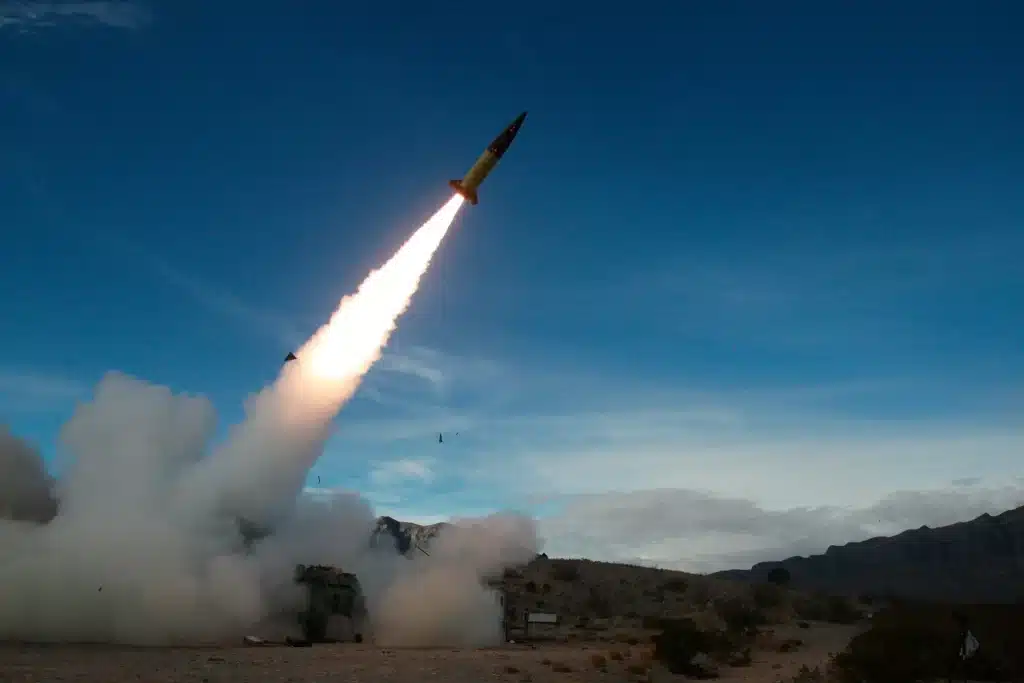With two months remaining in his term, President Biden has, for the first time, authorized Ukraine to use the ATACMS missile system to support the defense of its forces in Russia’s Kursk region.

President Biden Authorizes Long-Range Missiles for Ukraine, Marking a Major Policy Shift
In a pivotal move, President Joe Biden has authorized Ukraine to deploy U.S.-supplied Army Tactical Missile Systems (ATACMS) to strike targets within Russian territory. This decision, reportedly confirmed by U.S. officials and cited by The New York Times, represents a significant change in the United States’ approach to supporting Ukraine amid its ongoing war with Russia.
Strategic Deployment Against Russian and North Korean Forces
The missiles are expected to target Russian and North Korean troops in the Kursk region, where Ukrainian forces face intensified aggression. Russia’s decision to integrate more than 10,000 North Korean soldiers into its operations has escalated the conflict, prompting this policy adjustment from Washington.
Ukrainian President Volodymyr Zelensky hinted at the authorization in a recent address but refrained from direct confirmation. Emphasizing the importance of action over rhetoric, he stated:
“Blows are not inflicted with words. Such things are not announced. The rockets will speak for themselves.”
Background and Implications
This authorization follows months of debate over the potential use of U.S. long-range missiles in the conflict. Initially, President Biden allowed the deployment of shorter-range HIMARS systems for defensive operations near Kharkiv. However, restrictions on ATACMS, which can strike targets up to 190 miles away, remained in place until now.
The decision aims to counter Russia’s and North Korea’s aggressive advances while sending a deterrent message to Pyongyang. While officials acknowledge the risk of escalation, they believe the potential benefits—enhancing Ukraine’s ability to defend itself and weakening enemy forces—outweigh the dangers.
Divisions Among U.S. Officials
The policy shift has divided U.S. officials. Some, concerned about limited U.S. stockpiles of ATACMS, resisted the move, while others worried about provoking a more aggressive response from Russian President Vladimir Putin. A recent intelligence assessment warned that Moscow could retaliate with sabotage or direct attacks on NATO assets.
Critics of the administration’s cautious approach, including Representative Michael R. Turner, chairman of the House Intelligence Committee, argue that the decision came too late:
“President Biden should have listened to President Zelensky’s pleas much earlier.”
Supporters of Biden’s previous restraint argue that avoiding escalation has been a successful strategy, minimizing direct Russian retaliation against the U.S. and its allies.
The Role of Kursk in the Conflict
Kursk has become a focal point in the war, with Ukrainian forces launching a significant cross-border offensive in August. Kyiv successfully captured portions of Russian territory, which it hopes to use as leverage in future negotiations to reclaim Ukrainian land occupied by Russia.
However, with Russian forces bolstered by North Korean troops and mounting assaults on Ukrainian positions, concerns over Ukraine’s ability to maintain control in Kursk have grown. U.S. officials believe that providing ATACMS could allow Ukraine to strike logistical hubs and troop concentrations, helping to counter these attacks effectively.
Geopolitical and Legal Ramifications
The decision has drawn attention internationally. While Britain and France have provided Ukraine with Storm Shadow and SCALP missiles, their leaders hesitated to authorize strikes within Russia. They awaited U.S. approval for similar actions with American-supplied systems, underscoring the significance of Washington’s decision.
The use of U.S.-supplied missiles on Russian territory introduces complex legal considerations. While Ukraine can argue self-defense under international law, the involvement of American weaponry could risk implicating the U.S. in the broader conflict.
A Shifting Landscape as Leadership Changes Loom
This decision comes as President-elect Donald J. Trump prepares to take office. Trump has pledged to curtail further military support to Ukraine, raising questions about the future of U.S. involvement in the war. Vice President-elect J.D. Vance has outlined proposals for peace that could leave Russian-occupied Ukrainian territory under Moscow’s control—a position that diverges sharply from current U.S. policy.
Looking Ahead
Despite concerns about escalation, officials see this policy shift as a necessary step to support Ukraine in the face of unprecedented threats. With the war entering a critical phase, the Biden administration’s decision could significantly impact the conflict’s trajectory, potentially bolstering Ukraine’s defenses while signaling to adversaries that international support remains steadfast.
This article was compiled by Horus Globe Media, relying on reporting from The New York Times and additional verified sources. For continued updates, follow our in-depth coverage of global developments.







